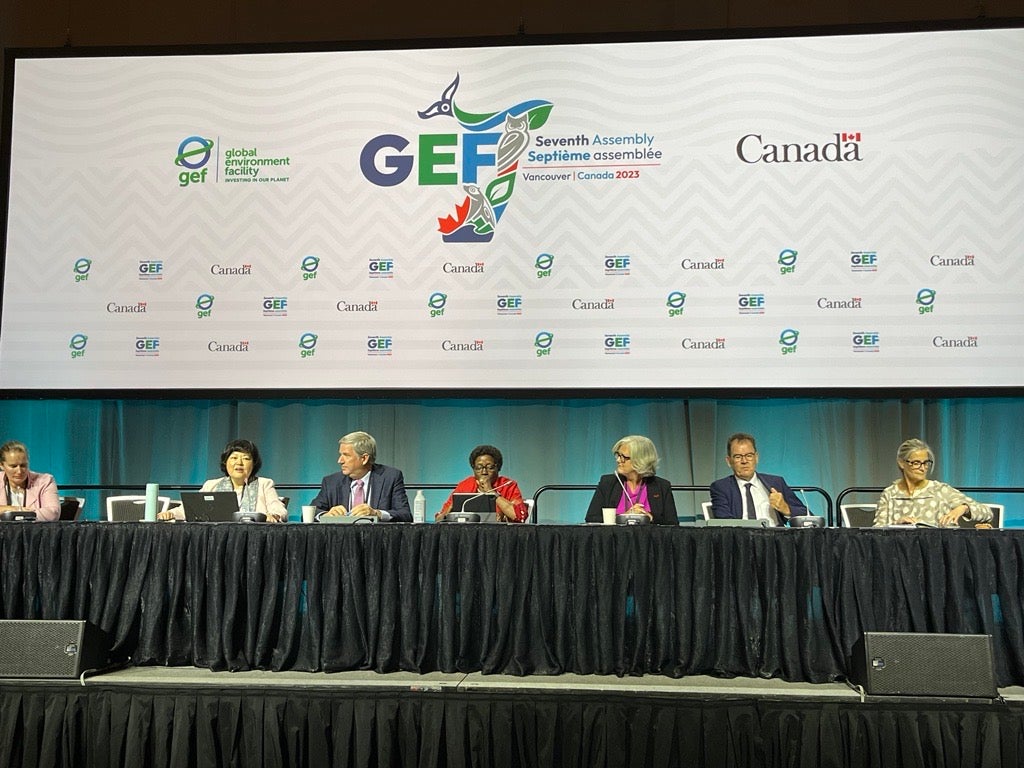From August 22-26, environmental leaders from 185 countries gathered in Vancouver, Canada, for the Seventh Global Environment Facility (GEF) Assembly. Building on recent diplomatic successes in areas like biodiversity preservation, reduction of toxic chemicals, and ocean protection, the GEF Assembly played a crucial role in evaluating progress toward the 2030 goals of combatting pollution, conserving nature, addressing climate change, and promoting community-centered preservation initiatives.
Our CEO, Lori Kerr, had the pleasure of attending and participating in 6 panel discussions. Here are some key takeaways from the week:
- We need to shift from siloed thinking towards a systems-based approach: The traditional approach of treating mitigation, adaptation and resilience (A&R), and biodiversity as separate concerns is no longer effective. We can benefit from their mutual reinforcement by recognizing the interconnections among these elements. The impact of climate change on nature and biodiversity and their joint influence on climate consequences emphasizes the significance of complete integration.
- The urgency of our situation requires speed of action. The private sector's involvement is vital, given the immense requirements and limited public budgets. Capital injection is essential, but innovation and creative solutions are equally important. While only 2% of adaptation finance comes from the private sector, so does innovation and the ability to develop and deploy forward-thinking solutions to our multifaceted problems.
- Blended finance can help achieve our goals: Over half of the global GDP is intertwined with nature, yet a significant annual funding gap of $700 billion exists. Emerging Markets and Developing Economies (EMDEs) house 70% of global forests and 80% of biodiversity, making them indispensable in addressing climate issues. However, investing in both nature and EMDEs presents challenges. Blended finance emerges as a valuable tool, requiring careful and strategic deployment to bridge gaps, manage risks, and maximize returns. It's time to allocate a greater portion of blended finance towards nature and adaptation while considering investments across various nature-oriented buckets.
Innovative approaches to financing and investment, such as blended finance, can also facilitate the pace and scale of investment needed for practical action on the ground and enable the creation of frameworks to measure success. While capital is crucial, the innovative use of financial resources, including philanthropic funds, is fundamental to unlock private-sector engagement. Additionally, we need to develop frameworks for evaluating the value and risk associated with environmental impact, such as assigning value to preserving nature, incorporating nature into supply chains, and assessing the monetary value of resources like maintained forests. Blended finance, with its patient and risk-tolerant capital, can help achieve these goals.
As we progress, it's evident that a holistic approach is necessary, involving diverse stakeholders and innovative financial solutions to address an interconnected web of challenges, ranging from mitigation and A&R to nature, biodiversity, gender inclusivity, indigenous communities, and beyond.
We look forward to continuing these meaningful discussions around climate at the upcoming NYC Climate Week. Stay tuned for more updates!
